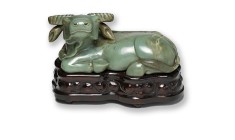Using Google Earth to identify site looting in Jordan
Google Earth imagery of Jordan has been systematically examined for evidence of archaeological site looting. To date, 23 looted sites have been identified. The total looted area is 515351 m2 (51.5 ha, or ~.5 km2). While on many sites the looting has been relatively small scale, with looted areas of approximately 1 ha (10000 m2), in a handful of cases (Bāb adh-Dhrā،, Qazone and Fayfa), looting has been more severe, with looted areas in the 10 ha range. In one case, that of Safi, the scale of looting is an order of magnitude greater than at the majority of sites, and nearly 20 ha have been looted. The majority (95%) of looted sites identified date to the Early Bronze Age or Roman/Nabatean periods, with sites from the Early Bronze Age accounting for 68% of the total looted area. Results of the Jordan study can also be found in the Journal of Field Archaeology.
Clicking on each icon below will open a pop-up balloon with the following information and a link for further documentation. Images of the sites can be seen on the images page.
Time period: the period(s) to which the site dates.
Area looted: the total area damaged by intensive looting (in m2).
Reference(s): published documentation about the site (used to determine time period and to corroborate visual evidence of looting).
Date of imagery: the date of the imagery from which the estimate of looted area derives.
You will need Google Earth to view the KML files below.
You can also download the KML file for the site and explore it in Google Earth.
If you wish to add polygons delimiting the heavily looted areas, you can download this kml file for use with Google Earth.
Chart and Tabular data: Jordan
